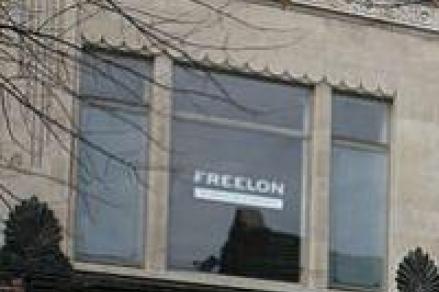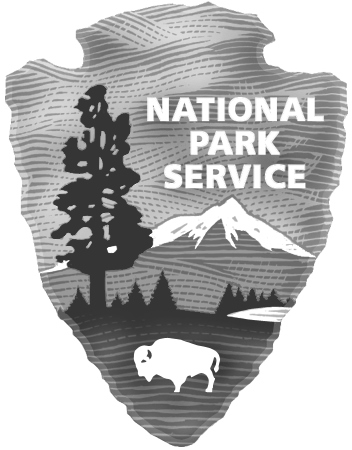This lesson is designed to introduce the events of the Greensboro Sit-In and understand its national impact on the Civil Rights Movement by looking at key primary sources. Students will also take a look at the Woolworth Store as a national landmark and the historical significance it holds as well its role it plays in our local community as a symbol of the struggle for equality by African Americans. This lesson could be incorporated easily into the Civil Rights Unit of the American History curriculum.
National Impact of the Woolworth Store, Site of the Greensboro Sit-In
National Impact of the Woolworth Store, Site of the Greensboro Sit-In

Location
Type of Landmark
Topics
Learning Objectives
-
Students will be able to analyze the social conflicts, movements and resulting reforms that impacted the Civil Rights Movement in terms of participants, strategies, opposition, and results by researching civil disobedience through primary sources.
-
Students will be able to identify the national significance of a local landmark by investigating the national impact of the event that took place there and its ongoing importance to the promotion of American ideals as described in the Declaration of Independence.
-
Students will be able to explain the immediate importance of historical site preservation by recreating a landmark placard detailing the lasting significance of the site being identified.
Materials
- Access to computers
- Sit-Ins: The Student Report
- WebQuest Worksheet
Suggested Instructional Procedures
Be sure to use the warmup and introduction time of the lesson to access prior knowledge of the sit-in and the landmark as well as teaching the key details and significance of the event.
- Bellringer/Warmup: Teacher should launch an introduction discussion based around the following questions: What is civil disobedience? Is civil disobedience effective? Why or why not? What are some examples of civil disobedience in action?
- Introduction to Woolworth Store Landmark Webquest: Teacher should introduce the Greensboro Sit-In as a prime example of non-violent protest during the Civil Rights Movement. Four African American college students in Greensboro, North Carolina, went into a Woolworth Store and waited at the white-only lunch counter to be served. This act of civil disobedience launched a national movement of protests by young people of all types and made a huge impact in the fight for racial equality in the United States. Teacher should pose the following questions for students to consider as they begin their activity: What is the overall significance of this event and the location at which it occurred? Why was this event and location able to have such an impact nationally? What legacy does this landmark leave in our nation’s history and how can it be preserved responsibly?
- After initial discussion of the event, students should dive into more extensive research of the event and its landmark by a completing the following webquest using the International Civil Rights Center & Museum website. Have students explore the website on their own paying close attention to the information under the EXPLORE tab, NEWSROOM tab Fact Sheets, and VISIT tab The Museum. As they explore, have them answer the webquest questions to ensure they notice key pieces of information.National Impact of Greensboro Sit-In Primary Source Group Activity:
- Students should be divided into groups of 3 or 4, and each group will be given a different letter from the Sit-ins: The Student Report to analyze.Your students will be looking at 6 different letters written by high school and college students from all over the nation that participated in CORE sponsored sit-in protests in response to the Greensboro sit-in. This primary source will essentially outline the nation-wide movement that was a result of the actions of the Greensboro four. You should discuss the fact that this was the beginning of a nationwide movement, discuss CORE and what that group was as well as their strategies and plans.
- Each group will read a different account from across the nation, conduct a primary source analysis on the letter, and present out to the class so as to teach the class about this account. (There are many options for primary source analysis. The document analysis forms suggested for this lesson were created by the National Archives and Records Administration and can be found by clicking here)
- Group members should be assigned specific roles before beginning the process. Each group should have reader, recorder, presenter, expert and expert. These roles are only a part of the individual’s overall participation. All group members should be active throughout the process of analysis and discussion
- Readers: Reads the primary source document out loud as the group follows along before beginning the assignment
- Recorder: Writes down the answers as they are discussed by the group during the analysis
- Presenter: Spokesperson for the group; gives a 2-3 minute presentation on the primary source analyzed to the entire class
- Expert: Ready to answer any follow up questions posed by the class or teacher to provide clarification and further insight.
- After presentations are given, have a whole class discussion about the role the Woolworth store plays in the civil rights movement story. Many of these sit-ins across the country were held at variety stores, many of them Woolworths. (Point out the accounts students just read as review.) Discuss how that site played a monumental role as a symbol of demonstration and collaboration for young people who wanted to play a part in the civil rights movement.
- Activity Wrap Up Questions: As an activity wrap up, students should individually answer the following questions for students to consider:
- Why do you think the A&T students chose the Woolworth Store as the site for their civil disobedience?
- How did using a national chain as the breaking ground of the sit-in movement affect the overall effectiveness of the movement?
- In what way does this "landmark" need to be preserved and what lessons can it help to teach future generations as the civil rights movement seems to be a continual effort in America?
- Do you think the civil disobedience strategy used in this situation was successful or unsuccessful and at what rate were results seen? Was the change too gradual? What are the benefits and challenges of taking that approach in such an emotional battle for rights?
Vocabulary
Civil Disobediance: Refusal to obey laws as a way of forcing the government to do or change something
CORE: The Congress of Racial Equality was an active student organization in the Civil Rights protests of the 1960s. Founded by a group of students at the University of Chicago, the student group would use Civil Disobedience to force government action on the issue of Civil Rights.
Segregation: To seperate people on the basis of race or religion.
Jim Crow Laws: A set of laws passed after the end of Reconstruction by the state governments of the southern United States that disenfranchised African-Americans and turned them into second class citizens.
Equality: To be equal to other groups within society.
Civil Rights: Personal Liberties that belong to an individual based on their standing as a citzent of a society.
End of Lesson Assessment
Landmark Placard Creation: As an assessment tool, students should be able to create a landmark placard for the Greensboro Woolworth Store briefly highlighting the major events of the sit-in as well as the historical significance and national impact that the landmark had and still has today. Be sure to point out what a historical marker looks like, the typical length of such descriptions, and their overall purpose by showing them a few examples. The write-ups should be no more than 50 words. Be sure to provide students with the rubric when you give them this assignment so that they are aware of the expectations and requirements. (There are many options for historical landmark rubrics as well. Attached is the suggested rubric for this activity and was created by ReadWriteThink.)
Subject
Grade Level
Standards/Eligible Content
Common Core Standards
Author
Lindsay Russell, High School Teacher, North Carolina.
Funders/Sponsors
Cultures of Independence has been made possible in part by a major grant from the National Endowment for the Humanities: Celebrating 50 Years of Excellence
Any views, findings, conclusions, or recommendations expressed in this website or during the institutes, do not necessarily represent those of the National Endowment for the Humanities.
Additional funding is being provided by Wells Fargo through HEAD for the Future, its partnership with HSP, and by Independence National Historical Park.


Attention Teachers!
Let us know how you used this plan and be featured on our site! Submit your story here.
